Multilingualism and creativity
Creativity is especially important when it comes to encouraging learners to use the full range of their semiotic and social resources when communicating with others and producing discourse.
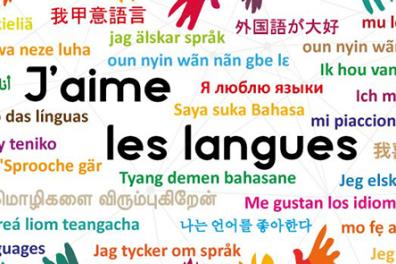
What are the links between language learning and creativity?
There seems little doubt today that a number of language teachers would agree that language learning should have something to do with "creativity". They would probably also agree that, on the one hand, teaching would benefit from being more creative, that more "creative texts" in both production and comprehension could be suggested for teaching and, on the other hand, on the same continuum that students should be encouraged to use language more creatively. This vision has long been cultivated by educational theorists, and various examples of its application can be found in institutional competitions such as the plurilingual short story competition[1]:
Enter the competition alone for a classic short story. But don't forget your chance to take part in the new Prix PERL, with the creation of a digital literary work! Individually or collectively, play on the multimodality offered by technological supports to write between languages by creating a digital work.
In this incentive, the social dimensions, the game, the contest itself as well as the contribution of digital technologies are emphasized, as these three dimensions invite creativity through writing between languages that in fact bring multiliteracies and multimodality into play.
But what's sometimes missing from discussions on creativity and language teaching-learning is a reflection on what it really means to be a creative user of languages outside of any medium or media used for this purpose. Indeed, creative language use cannot be totally based on the use of this or that new, fashionable and ephemeral technology, as this would be tantamount to creating products that are rapidly outdated, as one new tool quickly chases another. The contribution of social networking technologies and tools supports translanguaging epistemologies, especially when they encourage users to articulate different writing systems with graphic forms of communication in sophisticated communicative acts and modalities.
Creativity is thus sometimes far removed from the real-life situations in which language teaching and learning actually take place. Yet it is also fundamental to address in discussions of creativity the "messiness" of most situations in which individuals try to learn a language, the "messiness" of creativity itself and the "messiness" of the whole activity of language itself (Jones, 2018). A disorder that formal learning situations sometimes attempt to order in curricula by separating the spaces between languages. What Jones (2018) reminds us of in this regard is that "most considerations of creativity in language learning and teaching have taken place within dominant monolingual ideologies that view languages as discrete, abstract codes, separated from each other and from the messy social contexts in which they are used".
We might therefore ask more precisely what role creativity can play in language teaching and learning today, including in the language classroom, regardless of the tools or media mobilized. In short, creativity has something to do with disorder, and "creative disorder" is perhaps one of the fundamental conditions for language and discourse production.
Creative disorder is a fundamental condition for language production and discourse production.
Creative disorder is a fundamental condition for language production and discourse production.
Creative disorder is a fundamental condition for language production and discourse production.
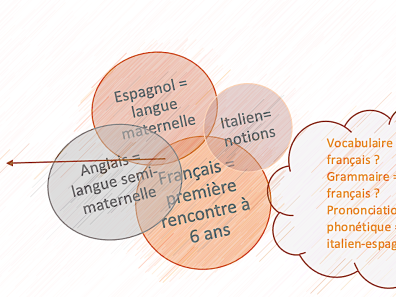
Such creative disorder could thus establish the ability to know oneself and develop, among other things, a sense of self by focusing more on processes than on outcomes.
What place should be given to creativity in the language classroom?
What we're seeing about the place to be given to creativity in the language classroom therefore comes down to considering how language and its repercussions on learners' identities are understood. This allows us to escape from dominant ideologies that see languages as separate from each other, and to take into account the "disordered" social contexts in which they are used.
This is what the conclusions of the four-year research program at Oxford University entitled "creative multilingualism" propose. Exploring the links between creativity and languages, it defines language creativity as not reproducing a language, but (re)creating, (re)shaping and (re)contextualizing learners' language and cultural resources. In this extract from a short story written by a learner of French, parts of sentences such as "à la lente allure réfléchie" are repeated, separated by punctuation, while adjectives such as "capée" translated from English or words such as "decrescendo" are deliberately introduced to produce meaning:
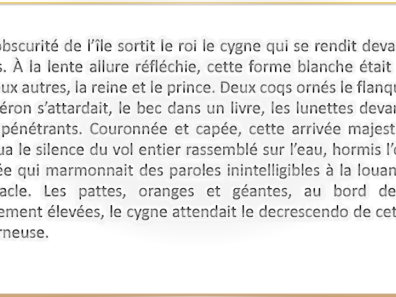
This excerpt shows how learners can seize space in the language classroom to express themselves and align a range of resources from their language repertoire to meet conventions and constraints.
The Creative Multilingualism program review offers complementary resources[2] to support teachers who wish to give pride of place to creative pedagogy. At the same time, it invites us to imagine what creativity in language teaching and learning looks like when teachers and learners begin to decompartmentalize languages. Such openness engenders a form of control that leads learners to manage the codes available, since languages are neither used with the same frequency nor for the same purposes, but with relevant recourse to the totality of language resources.
According a central place to creativity in the language classroom invites us above all to reflect on how ideas about language learning might change if we treated creativity as if it were really important, as if it were more than a means of making a grammar lesson less boring, of highlighting an unexpected remark by a student or even of unknowingly tending, under the pretext of efficiency, towards reducing the legitimacy of identities and granting them fixed values.
Enhancing creativity in pedagogical approaches engages learners by empowering them to create for themselves, through the variety of tasks that ensues; to keep them on their toes in anticipation of what's next in store for them.
And finally, the calls for "creative" language teaching are clearly marked by studies on bilingualism: creative thinking and conceptual mobility are more pronounced when the brain is called upon in different modalities, which has many positive spin-offs for learning in fields other than language.
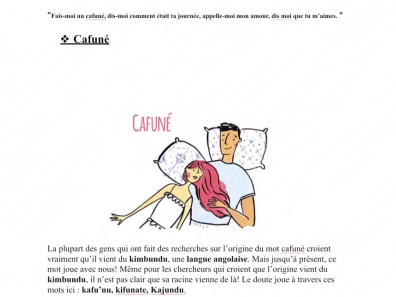
Creativity and plurilingualism
The links between creativity and plurilingualism can therefore be viewed in terms of how plurilingual speakers are able to leverage their linguistic and semiotic creativity by going beyond any restrictions or norms imposed by a national denomination of languages. This vision of creativity also goes beyond the idea of complete or partial language competence. It sees plurilingual speakers as creators of meaning, capable of using the whole of their linguistic and semiotic repertoire to produce meaning[3].
In effect, contrastive sensitivity enables sensitivity to interlingual differences, it is epi or metalinguistic. As codic alternation is directly linked to social and cultural contexts, it therefore goes hand in hand with multimodality and multiliteracies.
Thus, such a perception of the intrinsic links between creativity, plurilingualism and language interweaving[4] allows in language classes to:
- Enlarge speakers' choice of language uses.
- Challenge form.
- Encourage code-mixing including in writing.
- Help learners create meaning.
- Include all speakers.
- Take language beyond oral and written texts.
- Give teachers a more holistic assessment.
The aim, in this way, is to encourage plurilingualism through creativity by promoting flexibility, problem-solving, metalanguage activity and interpersonal relationships. The gains from creativity are to be found in interactions and at the very heart of the lives of plurilingual individuals, without limiting the development of creativity to cognitive gains alone.
What help is there in anticipating linguistic and cultural problems?
It's clear that learners' and teachers' conceptions of languages have an influence on how they will respond "creatively" to certain communicative and language production challenges. In order to anticipate and respond to certain language and cultural issues, we can also use grids to reflect on the use of the most appropriate language(s) during different phases of a course[5]:
.
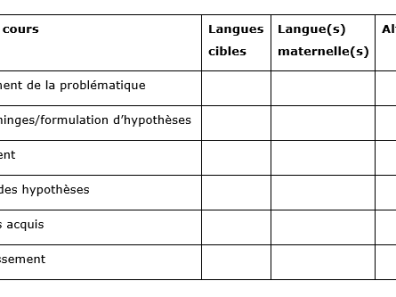
Each phase can thus easily open up translanguaging spaces for creativity and the production of reflective discourse.
Some final thoughts on so-called "creative teaching"
As this brief review has shown, one of the challenges for the field of language teaching-learning today is above all to encourage teachers and future teachers to promote plurilingualism and creativity. This, in turn, promotes both taught and untaught languages, as well as their use. From a pedagogical point of view, it's not a question of how to implement a more creative pedagogy, but rather of how teaching can encourage learners' creativity. One of the aims of training future teachers is to boost their confidence in implementing and carrying out creative work in the language classroom, in order to raise learners' awareness of the creative dimension of languages and thus encourage an enthusiasm for language learning.
This is how, from the conception of creativity, flows the way in which learners will in turn be able to use the full range of their semiotic and social resources when communicating and producing discourse.
Christelle HOPPE, associate of PLIDAM & lecturer in the DDL course, Inalco - FLE teacher at the University of Nantes.
References
Edwards, J., Mohammed, N., Nunn, C., & Gray, P. (2020). Mother tongue other tongue: nine years of creative multilingualism in practice. English in Education, 1-13.
Fürst, G., & Grin, F. (2018). Multilingualism and creativity: a multivariate approach. Journal of Multilingual and Multicultural Development, 39(4), 341-355.
García, O., & Wei, L. (2014). Translanguaging and education. In Translanguaging: Language, bilingualism and education (pp. 63-77). Palgrave Pivot, London.
García, O., Johnson, S. I., Seltzer, K., & Valdés, G. (2017). The translanguaging classroom: Leveraging student bilingualism for learning. Philadelphia, PA: Caslon.
Jones, R. H., & Richards, J. C. (2015). Creativity and language teaching. In Creativity in language teaching (pp. 3-15). Routledge.
Kohl, K., Dudrah, R., Gosler, A., Graham, S., Maiden, M., Ouyang, W. C., & Reynolds, M. (2020). Creative multilingualism: A manifesto (p. 334). Open Book Publishers.
Notes
[1] Institutional page: http://www.inalco.fr/actualite/2e-edition-concours-inalco-nouvelle-plur…
[2] Resources can be consulted at: https://www.creativeml.ox.ac.uk/french-creative-teaching-resources
[3] This synthesis very largely takes up Ofela Garcia and Li Wei's vision of a so-called "translanguaging" space.
[4] This type of pedagogy falls within the framework of plural approaches and, more specifically, so-called translanguaging pedagogical approaches.
[5] This table takes up the proposals from the Institut Français website: https://sites.google.com/institutfrancais.it/le-francais-de-l-histoire/